Kumano Nachi Taisha is one of the Kumano Sanzan, the head shrine of the approximately 5,000 Kumano shrines across the country. Due to the divine virtue of the main deity, Kumano-no-Okami, the shrine has been called "Musubi no Miya" since ancient times, and is worshipped as a shrine that not only connects people but also connects various wishes.
2025.10.17-
Table of Contents
- Kumano Taisha Shrine
- Kumano Nachi Taisha Shrine Festival
- A landscape of prayer unfolds as you visit the Kumano Sanzan shrines
Kumano Taisha Shrine
The origin of shrines
Around 662 BC, when Kamu Yamato Iwarehiko no Mikoto (later Emperor Jimmu) landed at Nishikiura (present-day Nachi Beach) during his expedition to the east, he spotted a shining object in the mountains. Walking under the light, he arrived at the magnificent Nachi Falls. Upon seeing the waterfall, Kamu Yamato Iwarehiko no Mikoto enshrined the deity Oonamuchi no Kami (Great God) as a divine object, and this is said to be the origin of Mount Nachi.
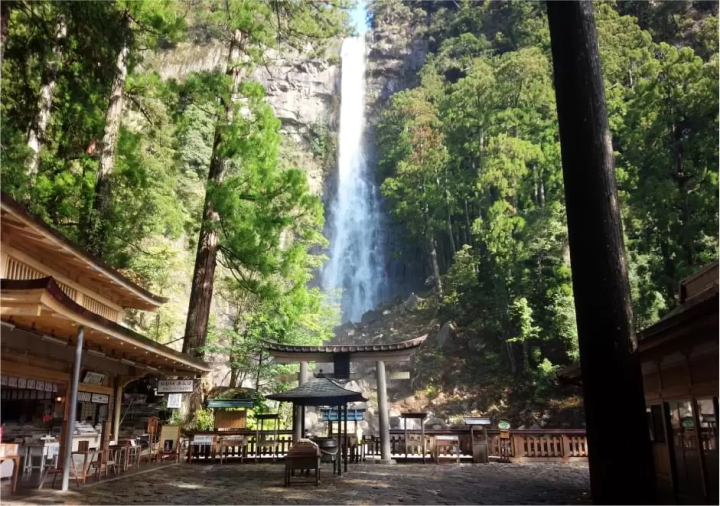
Later, the gods of Kumano descended to Hikarigamine near Mount Nachi and were enshrined at Mitakimoto, but in the 5th year of the reign of Emperor Nintoku (317), a new shrine was built on the mountainside and the gods of Kumano and Mitaki were moved there, which is said to be the beginning of Kumano Nachi Taisha Shrine .
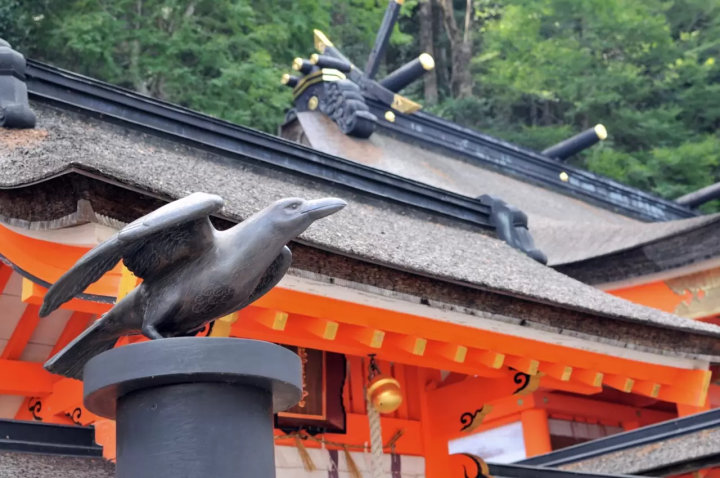
Mitakimoto is currently Hiro Shrine, an auxiliary shrine of Kumano Taisha Shrine, and continues to worship Nachi Falls as its sacred object. If you proceed from the entrance to the Mitaki Worship Hall next to the gift shop to the stage at the Oku, you can get a close-up look at the impressive 133m waterfall.
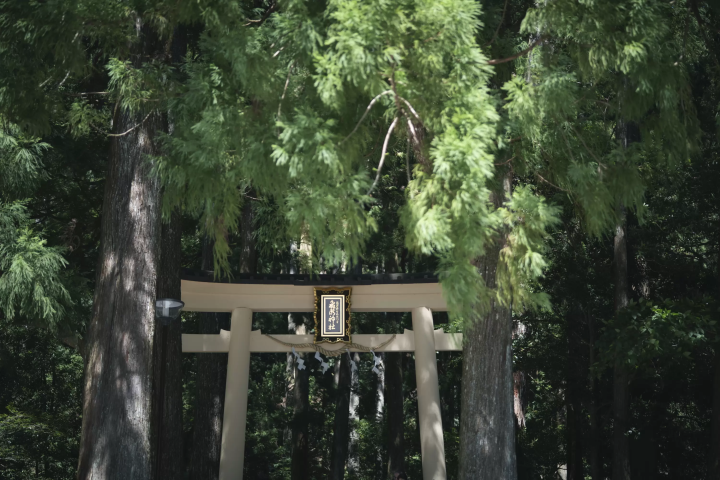
Kumano Nachi Taisha Shrine Festival
Kumano Taisha Shrine holds many festivals throughout the year. Among these, the annual Nachi Fan Festival, held on July 14th every year, is one of Japan's three major fire festivals. It is a religious ceremony that expresses gratitude to the gods for the preciousness of water and fire, which are the foundation of our lives, and for the blessings of nature.
Annual festival "Nachi Fan Festival"
The annual festival, "Nachi Fan Festival," is also known as "Nachi Fire Festival" because of the heroic sight of the flames of large torches purifying the approach to the waterfall.
In the morning, a ceremony to pray for the safety of the Imperial Family and the people is held at Kumano Nachi Taisha Shrine, followed by a performance of votive performing arts by local people, including Nachi Dengaku, a UNESCO Intangible Cultural Heritage. The shrine grounds are filled with a lively atmosphere.
In the afternoon, the "Togyo Festival" begins, where the gods are finally brought to the waterfall. The "Ogi Mikoshi" that is the center of the festival is different from the typical shrine-style mikoshi, with a long and slender shape of about 6 meters long and 1 meter wide, and represents the shape of Nachi Falls.
Each of the 12 mikoshi is decorated with fans and sacred mirrors. The 30 open fans represent one month, the two half-open fans represent the waxing and waning moons, and it is said that the number of mikoshi represents one year (12 months).
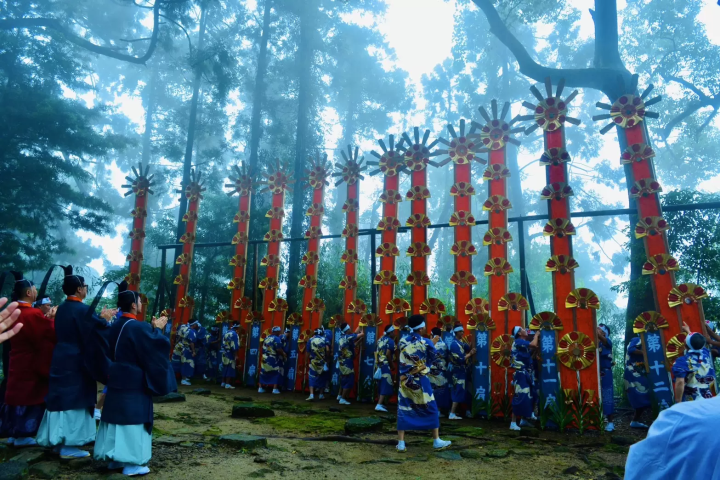
When the fan mikoshi approaches the auxiliary shrine, the highlight of the event, the "Fire Ritual," begins. Men in white robes carry 12 large, lit torches and parade down the approach to welcome the fan mikoshi. The heroic sight of the men purifying the approach with the flames of the large torches while shouting spirited chants of "Harya, Harya" is why it is called the "Fire Festival."
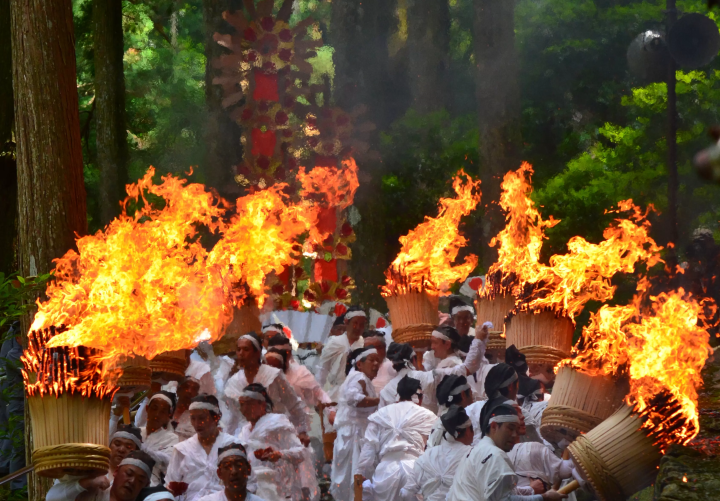
This grand festival, which combines the sacred and the dynamic, is imbued with awe and gratitude for nature. It is a valuable opportunity for volunteers and visitors to experience Kumano's faith and culture up close.
A landscape of prayer unfolds as you visit the Kumano Sanzan shrines
The Kumano Kodo is a pilgrimage route walked by many people, regardless of age, gender, social standing, or social standing, to Kumano, the sacred place of "resurrection."
Your journey along the Kumano Kodo and visit to the Kumano Sanzan shrines will enable you to confirm the state of prayer felt by the pilgrims of the past.
↓ Kumano Sanzan series
-
2025.10.20
-
[Kumano Pilgrimage I] Kumano Hongu Taisha
2025.10.24
The contents on this page may partially contain automatic translation.

![[Kumano Pilgrimage III] Kumano Nachi Taisha Shrine/Hiraku Shrineの画像](https://resources.matcha-jp.com/resize/720x2000/2025/09/10-243911.webp)
![[Wakayama Guide] Kumano Kodo](https://resources.matcha-jp.com/resize/200x2000/2025/10/06-246121.webp)
![[Kumano Pilgrimage I] Kumano Hongu Taisha](https://resources.matcha-jp.com/resize/200x2000/2025/09/26-245154.webp)
![[Kumano Pilgrimage II] Kumano Hayatama Taisha Shrine](https://resources.matcha-jp.com/resize/200x2000/2025/09/01-243052.webp)
![[Kumano Pilgrimage IV] Seiganto-ji Temple on Mt. Nachi](https://resources.matcha-jp.com/resize/200x2000/2025/09/02-243066.webp)